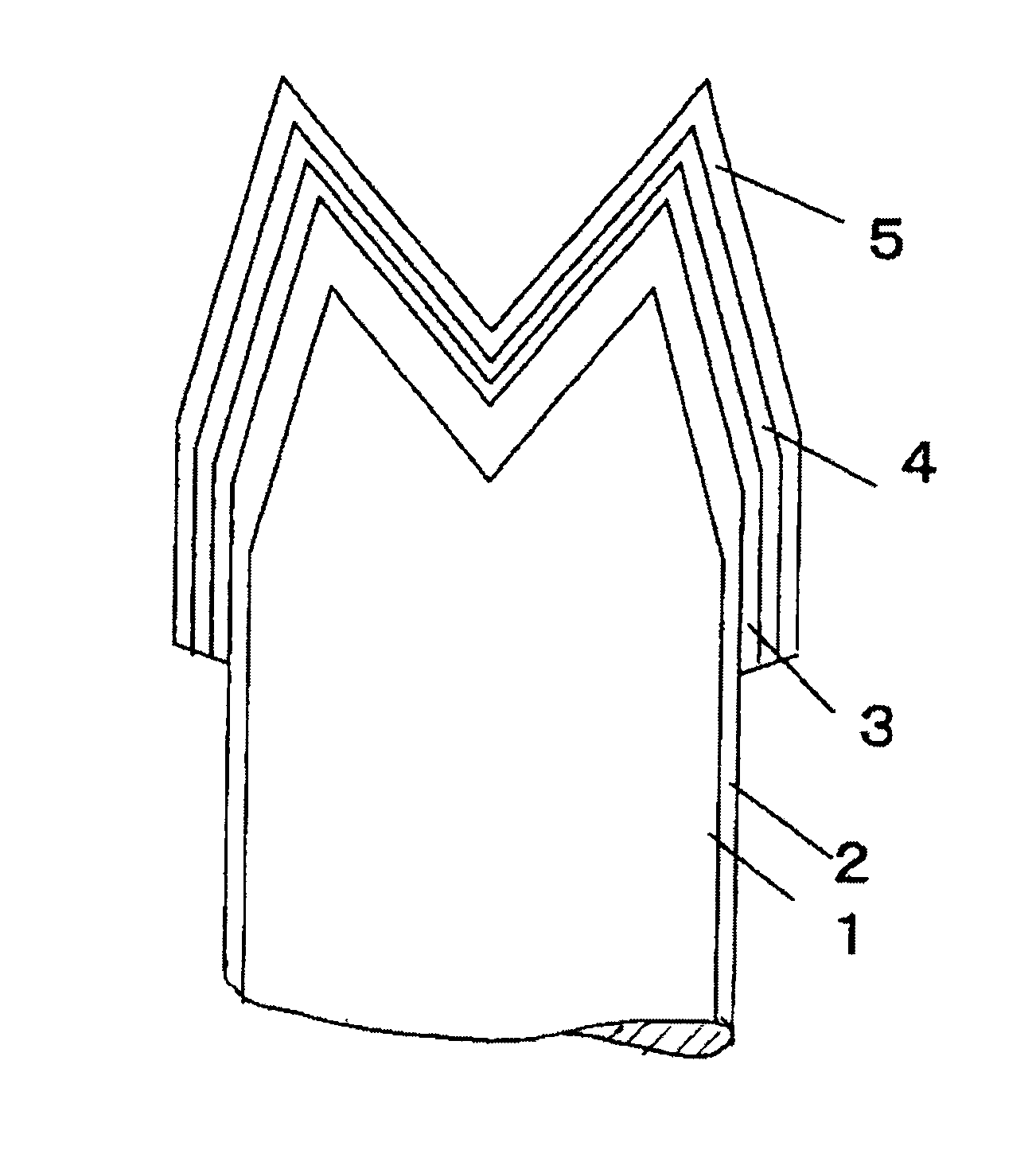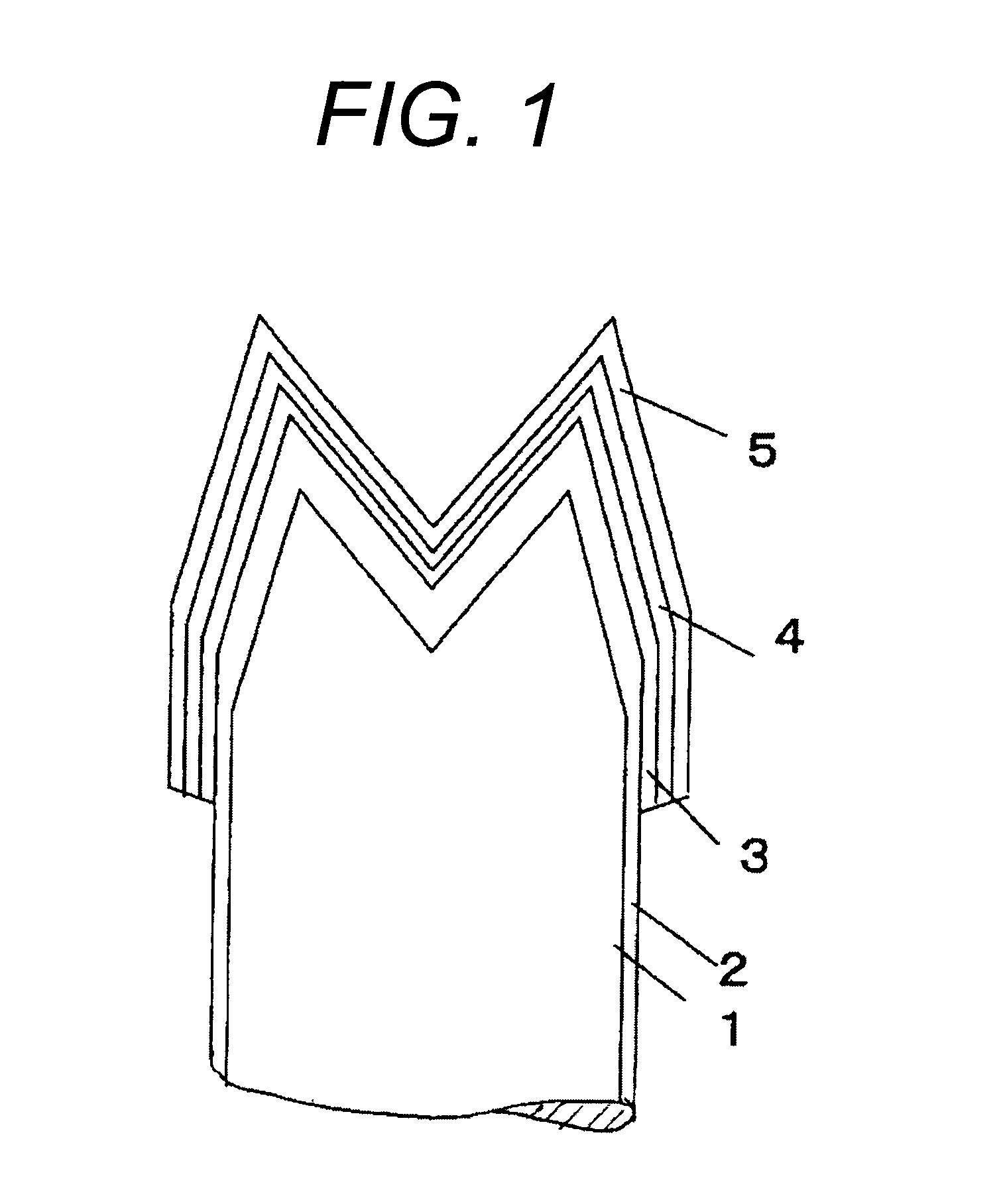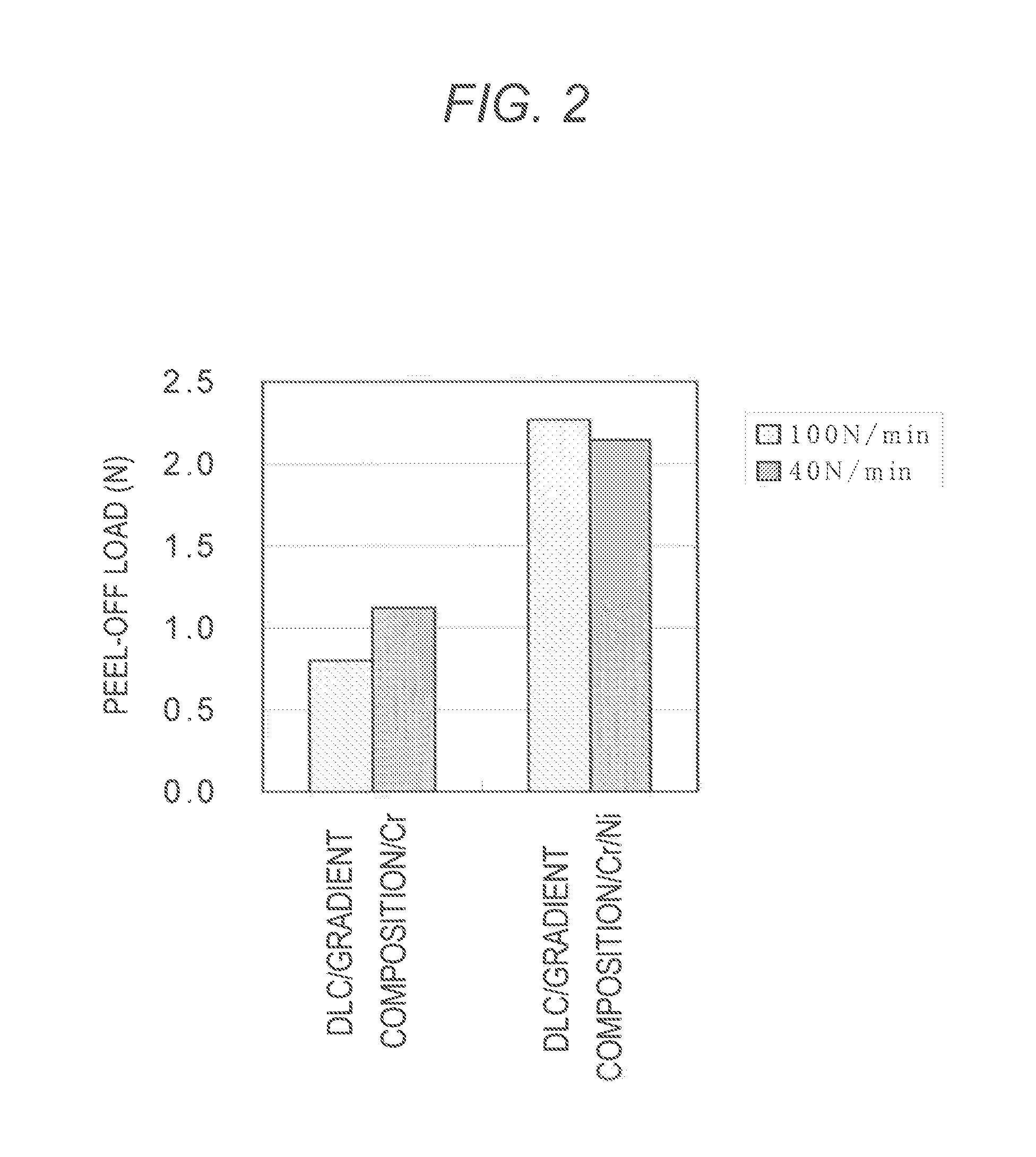Electric contact member
- Summary
- Abstract
- Description
- Claims
- Application Information
AI Technical Summary
Benefits of technology
Problems solved by technology
Method used
Image
Examples
example 1
[0075]A spring built-in probe with a tip part divided into four parts as shown in FIG. 1 was used as a contact probe pin. This contact probe pin was Au-plated on a surface thereof, and a base material 1 was made of Be—Cu. Incidentally, FIG. 1 schematically shows a state where the tip part is projected from the side, and the shape thereof is shown as two projections. Further, in FIG. 1, reference numeral 2 indicates an underlying layer, reference numeral 3 indicates an inner layer composed of Ni or Ni alloy, reference numeral 4 indicates an outer layer comprising at least one of Cr, Cr alloy, W and W alloy, and reference numeral 5 indicates a carbon film comprising a metal and / or a carbide thereof.
[0076]A carbon (graphite) target, a Cr target and a Ni target were each arranged in a magnetron sputtering chamber, and the contact probe pin was arranged in a position opposed to them.
[0077]After inside of the sputtering chamber was evacuated down to 6.7×10−4 Pa or less, Ar gas was introdu...
example 2
[0083]A contact probe pin with a carbon film was prepared by forming, in turn, a Ni layer, Cr layer, gradient composition layer and a carbon film in the same manner as in Example 1 with the exception that a contact probe pin (having a tip part divided into four parts as with Example 1) in which Pd (an underlying layer) was plated on the surface of the base material 1 made of Be—Cu was used.
[0084]Using the contact probe pin with a carbon film formed above, contact were performed 100,000 times to an electrode composed of lead-free solder (Sn+3 atomic % Cu+0.5 atomic % Ag), and the state of film peel-off of the tip part was observed, and in order to confirm the presence or absence of stability of the electric resistance value due to film peel-off, a current of 100 mA was turned on for each contact, and changes in electric resistance (changes in resistance) were determined (however, the measurement of the resistance was made once pre 100 times). Changes in electric resistance (the relat...
example 3
[0085]A contact probe pin with a carbon film was prepared by forming, in turn, a Ni layer, Cr layer, gradient composition layer and a carbon film in the same manner as in Example 1 with the exception that a commercially available contact probe pin in which the base material 1 is a Pd alloy (having a tip part divided into four parts as with Example 1) was used.
[0086]Using the contact probe pin with a carbon film formed above, contact was performed 100,000 times to an electrode composed of lead-free solder (Sn+3 atomic % Cu+0.5 atomic % Ag), and the state of film peel-off of the tip part was observed. As a result, film peel-off was not observed, and it was confirmed that an adhesiveness of a stable film could be secured as with Example 2.
PUM
 Login to View More
Login to View More Abstract
Description
Claims
Application Information
 Login to View More
Login to View More - R&D
- Intellectual Property
- Life Sciences
- Materials
- Tech Scout
- Unparalleled Data Quality
- Higher Quality Content
- 60% Fewer Hallucinations
Browse by: Latest US Patents, China's latest patents, Technical Efficacy Thesaurus, Application Domain, Technology Topic, Popular Technical Reports.
© 2025 PatSnap. All rights reserved.Legal|Privacy policy|Modern Slavery Act Transparency Statement|Sitemap|About US| Contact US: help@patsnap.com



